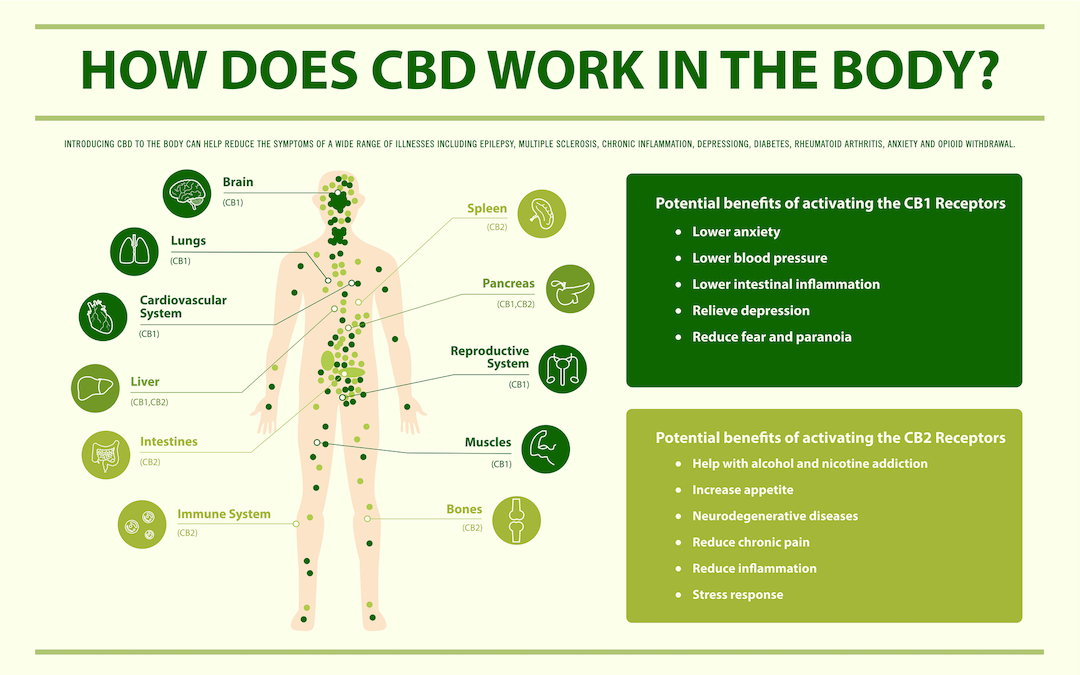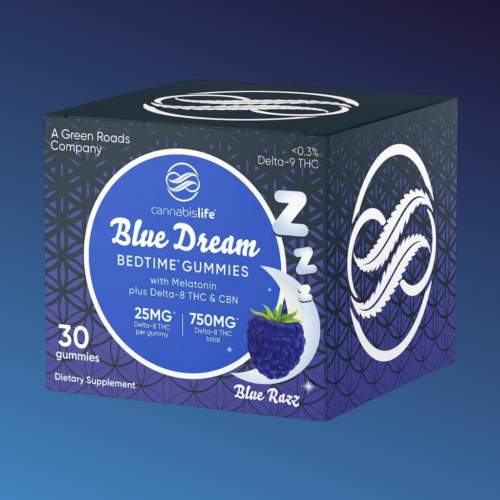How CBD works in the human body
The Endocannabinoid System
In order to understand how CBD works in the human body, it’s important to understand the primary bodily system that it affects: the Endocannabinoid System (ECS).
- The ECS is present in all humans – receptors exist throughout the body.
- It is responsible for homeostasis – regulation of breath, inflammation, immune responses, mood, pain, blood pressure, tumor surveillance, etc.
- It can be activated by going for a run, e.g. ‘runner’s high’
- It may be activated during osteopathic manipulation and acupuncture.
The ECS consists of specific cell receptors and molecules in your body. These cell receptors are like locks on the surface of your cells. The keys to these locks are called endocannabinoids. In other words, endocannabinoids are chemicals that act as messengers to give your cells specific directions in order to carry out specific bodily processes.

Certain receptors are more concentrated in specific regions of the body. For example, CB1 receptors are abundant in the central nervous system, while CB2 receptors are more often found on immune cells, in the GI tract, and in the peripheral nervous system.
“I can’t list all the physiological systems and conditions affected by the cannabinoids because there are too many.”
Dr. Raphael Machoulam, Chemist who identified the ECS
The ECS and Your Health
The ECS assists in maintaining homeostasis (or optimal balance) in the body. That balance takes into account all of your primary systems: appetite, digestion, hunger, immune function, memory, mood, motor control, pleasure and reward, pain, reproduction, sleep, and temperature regulation.
When the ECS is disrupted, the complex balance of these systems is likewise disrupted. In cases where the body cannot produce enough endocannabinoids or fails to regulate them properly, these primary systems are more susceptible to illness.
Because the endocannabinoid system plays such an important role in maintaining homeostasis among vital bodily processes, it holds promise as a treatment target for many debilitating conditions.
And that’s where CBD comes into play.
How Does CBD Work?
Cannabidiol (CBD), is one of 113 identified active phytocannabinoids found in the Cannabis sativa plant. Hemp-derived CBD is a non-psychoactive compound and is unlike the psychoactive phytocannabinoid, Delta-9 Tetrahydrocannabinol (THC), that is found in marijuana.
CBD interacts with our endocannabinoid system through CB1 and CB2 receptors to regulate many of our basic physiological functions and maintain our body’s homeostasis. It increases CB1 and CB2 expression by the ECS, and that increased expression can be beneficial in certain diseases, such as neuropathic pain and multiple sclerosis, by decreasing symptoms and even slowing disease progression.
Modulating the ECS “may have therapeutic potential in almost all conditions affecting humans.”
National Institutes of Health
The Entourage Effect
Our full-spectrum products have multiple cannabinoids, not just one or two. And that’s for good reason: individual chemical components achieve limited success as compared to the full spectrum of cannabinoids, terpenes, and other compounds all working together. This is what is known as The Entourage Effect.
While some CBD companies sell products that only contain CBD, we’re committed to providing products that offer the optimum benefits.
A recent study showed that 80% of chronic pain patients feel cannabinoids relieved their pain better than opioids, as well as decreased side effects and improved their quality of life.
As patients are searching for natural alternatives to prescription medications, CBD has been shown to help address health issues such as anxiety, insomnia, pain, depression, migraines, & more.


